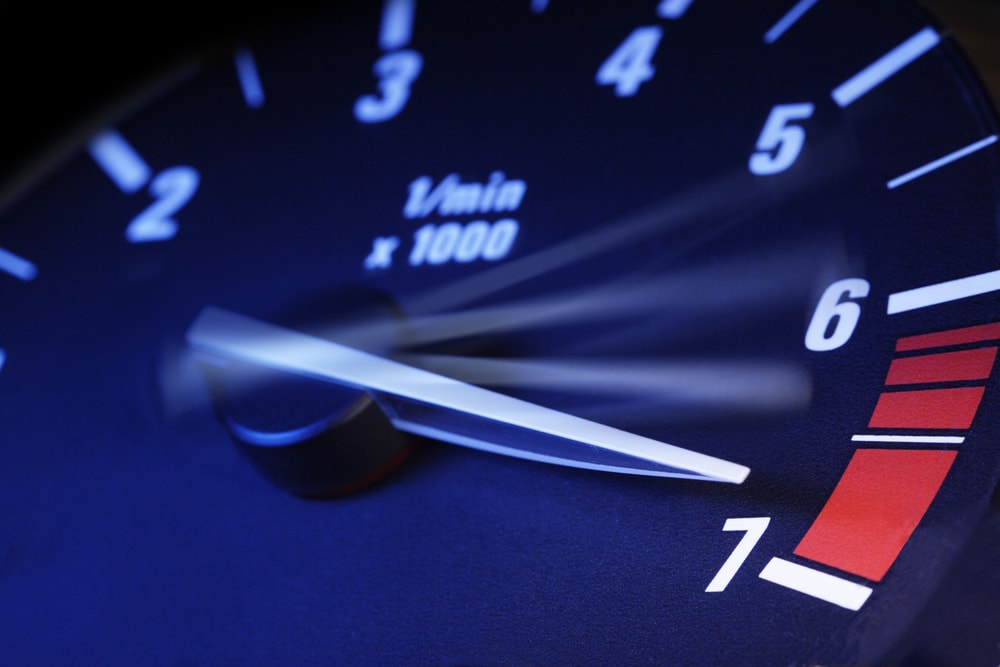Tachometer Fundamentals: Whatever You Need to Know for Accurate Readings
Wiki Article
Key Reasons Having a Tachometer Is Essential for Preserving Engine Wellness and Efficiency
In the world of automotive maintenance, the importance of a tachometer can not be overstated - tachometer. This modest yet critical instrument plays an essential role in the maintenance of an engine's health and efficiency. By giving real-time data on engine speed and RPM degrees, a tachometer supplies important understandings that straight influence the performance and longevity of the engine. From preventing over-revving to enhancing gas intake, the applications of a tachometer are multifaceted and vital for any type of lorry proprietor or enthusiast. So, why is this seemingly simple gadget so vital? Let's check out the crucial factors behind its essential function in keeping engine wellness and performance.Preventing Engine Over-Revving

To safeguard the engine from possible damages, it is necessary to carry out procedures that avoid over-revving, a practice that can bring about expensive repair services and minimized engine life expectancy. Over-revving occurs when the engine's rotational rate exceeds the maximum restriction set by the manufacturer, creating undue anxiety on internal parts such as pistons, shutoffs, and connecting poles. This extreme stress can result in mechanical failings, including bent shutoffs, damaged pistons, and also disastrous engine failure.
A rev limiter is a tool that controls the maximum RPM (transformations per min) of the engine by either cutting off gas flow or spark to the engine when the pre-set limit is gotten to. Normal maintenance checks to make sure the engine is in optimal condition can also help in stopping over-revving cases and extending the engine's life expectancy.
Optimizing Fuel Usage
Effective gas intake plays an essential function in maximizing the performance and sustainability of an engine. tachometer. Optimizing gas usage not just assists in minimizing functional prices yet additionally decreases the ecological effect of vehicle emissions. By using a tachometer to keep track of engine speed and change driving practices accordingly, chauffeurs can achieve better fuel performanceKeeping a constant rate and staying clear of unexpected accelerations and decelerations can significantly improve fuel economic climate. Furthermore, proper gear option based upon the tachometer readings ensures that the engine runs within its ideal array, bring about extra effective fuel burning.
Regularly checking the tachometer can additionally assist identify any kind of inadequacies or mechanical issues that might be impacting fuel intake. A sudden rise in fuel use without a corresponding modification in driving behaviors might suggest a problem that needs attention.
Surveillance Engine Wellness
Checking engine health and wellness is crucial for ensuring optimum performance and durability of the vehicle. By using a tachometer to monitor engine rate, chauffeurs can find abnormalities that might show potential issues with the engine. A tachometer offers real-time data on engine transformations per min (RPM), allowing chauffeurs to determine any type of unusual spikes or decrease in RPM that might indicate issues such as misfires, worn-out elements, or engine overheating.
On a regular basis keeping an eye on engine health and wellness with using a tachometer allows chauffeurs to deal with concerns without delay prior to they intensify and trigger significant damages. As an example, identifying a decline in RPM might indicate gas distribution issues or a blocked air filter, while a sudden rise in RPM might point to concerns directory with the transmission or exhaust system. By remaining attentive and responsive to adjustments in engine performance, drivers can protect against expensive repairs and make certain the general wellness and effectiveness of their vehicle.
Increasing Engine Lifespan
Making certain the longevity of an engine calls for diligent upkeep practices and alert monitoring of essential efficiency indicators. Prolonging an engine's life-span is important for lowering overall automobile maintenance expenses and staying clear of unexpected malfunctions. A tachometer plays a substantial role in this element by giving real-time data on engine speed, permitting motorists and mechanics to make educated choices to stop excessive deterioration.
Moreover, regular upkeep based upon tachometer readings, such as prompt oil adjustments and trigger plug substitutes, can substantially add to prolonging the engine's durability. In general, incorporating a tachometer right into regular engine surveillance practices is important for preserving the engine's wellness and performance over the lengthy term.
Conserving Money on Repair Works
A tachometer assists in keeping track of the engine's RPM (transformations per min), enabling motorists to run within the suggested array. By remaining within these optimum RPM levels, extreme pressure on the engine can be avoided, decreasing the likelihood of costly repair services due to straining the engine.Furthermore, by utilizing the data from a tachometer to practice smooth velocity and slowdown, motorists can extend the life-span of their vehicle's components, eventually saving money on useful source maintenance and replacements. On the whole, the understandings supplied by a tachometer encourage chauffeurs to make enlightened choices that can prevent unnecessary damage on the engine, resulting in considerable price financial savings in the long run.
Conclusion
In conclusion, a tachometer plays an essential function in preserving engine health and wellness and performance by stopping over-revving, optimizing fuel consumption, keeping an eye on engine wellness, prolonging engine life expectancy, and conserving cash on fixings. It is an essential tool for making certain that the engine operates within safe limits and performs at its best, eventually adding to the durability and general performance of the vehicle.Report this wiki page